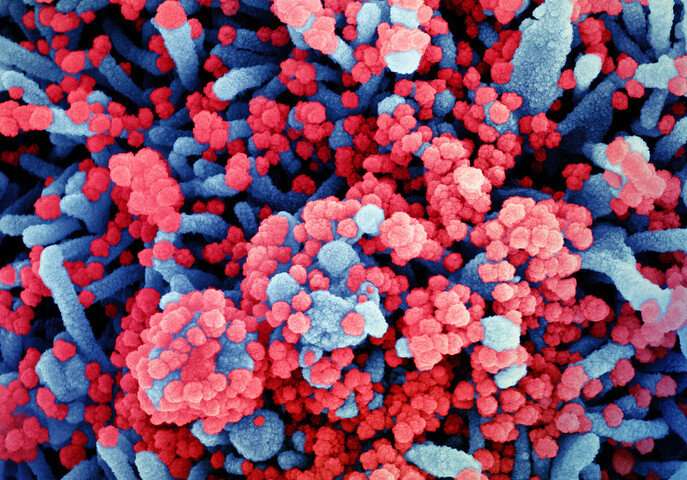
A new COVID-19 mouse model developed at the University of North Carolina at Chapel Hill captures many of the features of human disease and has helped advance a COVID-19 vaccine candidate to clinical trial.
Researchers, among them virologists and microbiologists at UNC-Chapel Hill’s Gillings School of Global Public Health, describe the mouse-adapted SARS-CoV-2 model in a paper fast-tracked and published Aug. 27 in Nature.
Small animal models that replicate SARS-CoV-2 are desperately needed to rapidly evaluate medical countermeasures. The mouse model developed in the laboratory of virologist Ralph Baric has already been used to accelerate the development of Operation Warp Speed vaccines such as those by Moderna.
The model is expected to have a positive impact on the development of antivirals, vaccines and antibodies for the fight against COVID-19, which has risen to 5.7 million cases in the U.S. and continues to be widespread in some communities.
In January, as scientists began gearing up to research the dangerous new illness, all eyes were on ACE2, a protein that sits on the surface of many types of cells in the human body including the heart, gut, lungs and inside the nose. SARS-CoV-2, the coronavirus that causes COVID-19, latches on to ACE2 receptor and uses it to enter cells and begin growing, leading to infection.
But it was discovered that SARS-CoV-2 cannot use the mouse version of the viral receptor ACE2. The Baric laboratory has a history of generating mouse models of other coronaviruses, such as SARS-CoV and MERS-CoV, so the team used their expertise to adapt SARS-CoV2 to use the mouse receptor.
They changed two amino acid positions in the viral genome to generate a mouse-adapted virus capable of infecting standard laboratory mice.
It worked, said study co-author Sarah R. Leist, a research associate at UNC-Chapel Hill, “generating mild symptoms in young mice and in old mice, we saw more severe disease in line with what has been reported in the human population.”
By spring the laboratory was able to begin many studies involving mice.
“We have used our SARS-CoV-2 mouse adapted model to test a few medical countermeasures already,” said lead study author Kenneth H. Dinnon III, a graduate research assistant in the Gillings School of Global Public Health. “We have collaborated with the National Institutes of Health Vaccine Research Center and Moderna to test their mRNA-1273 human vaccine candidate and shown that the therapy effectively protected mice from infection. We have also worked with several academic groups to test other vaccines platforms, including alphavirus replicon platforms developed in our own laboratory.”
The model is helping to make inroads in another therapeutic avenue: antibodies which are designed to harness the body’s ability to target and fight threats.
The team has worked with other labs to identify and test the best human monoclonal antibodies capable of binding and neutralizing SARS-CoV-2 in mice.
Experiments described in the Nature study found mice given single injections of interferon lambda-1a either before or after infection with SARS-CoV-2 protected mice from virus replication and loss of lung function.
The mouse model is the first to show that this kind of treatment works against SARS-CoV-2 in a living organism. The finding supports clinical trials ongoing at Stanford University.
Such milestones are part of the track record of researchers in the Baric lab at UNC-Chapel Hill’s Gillings School of Global Public Health. Lab work at Gillings accelerated the antiviral remdesivir to clinical trial. Today, remdesivir is in demand worldwide for its ability to speed recovery among hospitalized COVID-19 patients.
Source: Read Full Article
